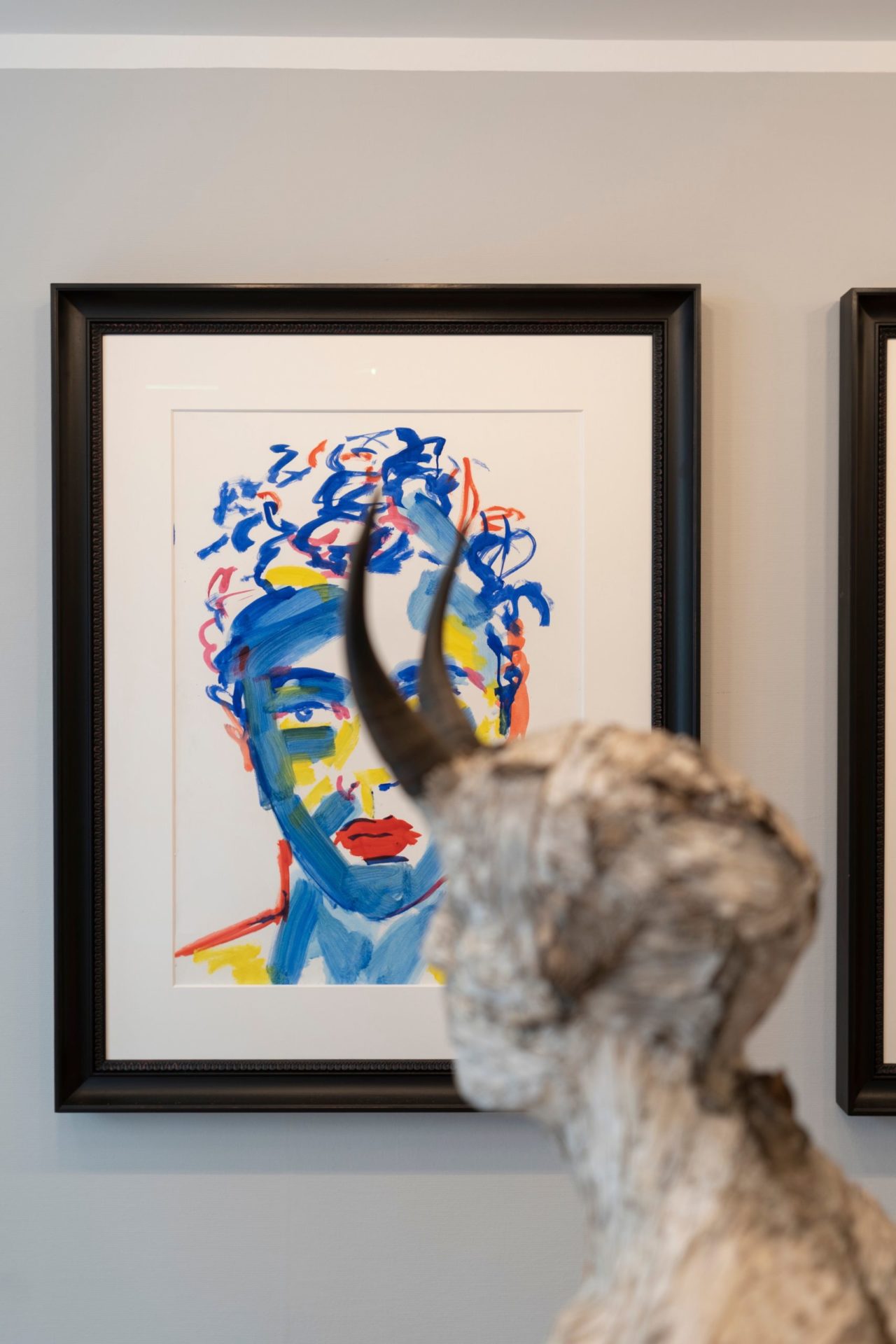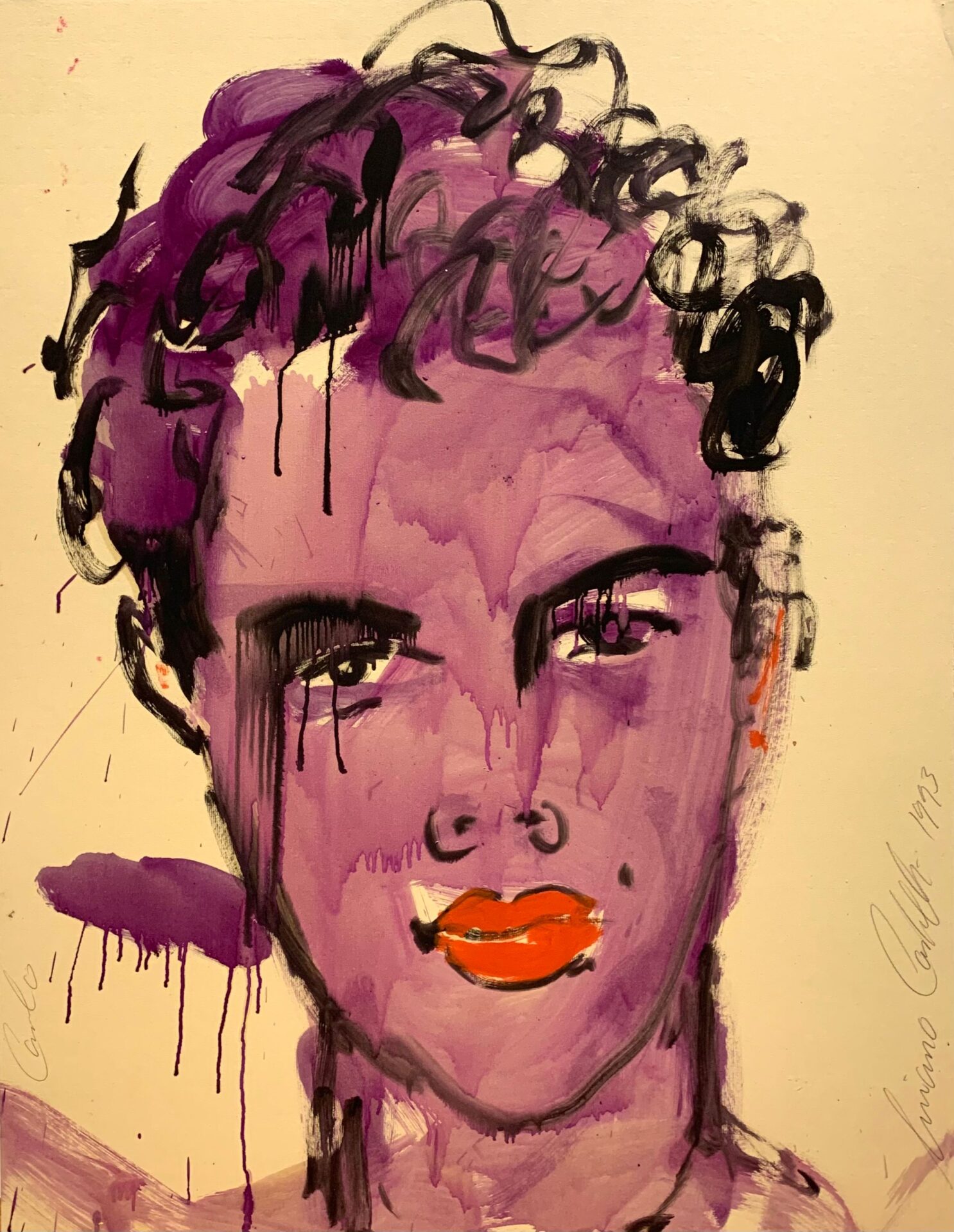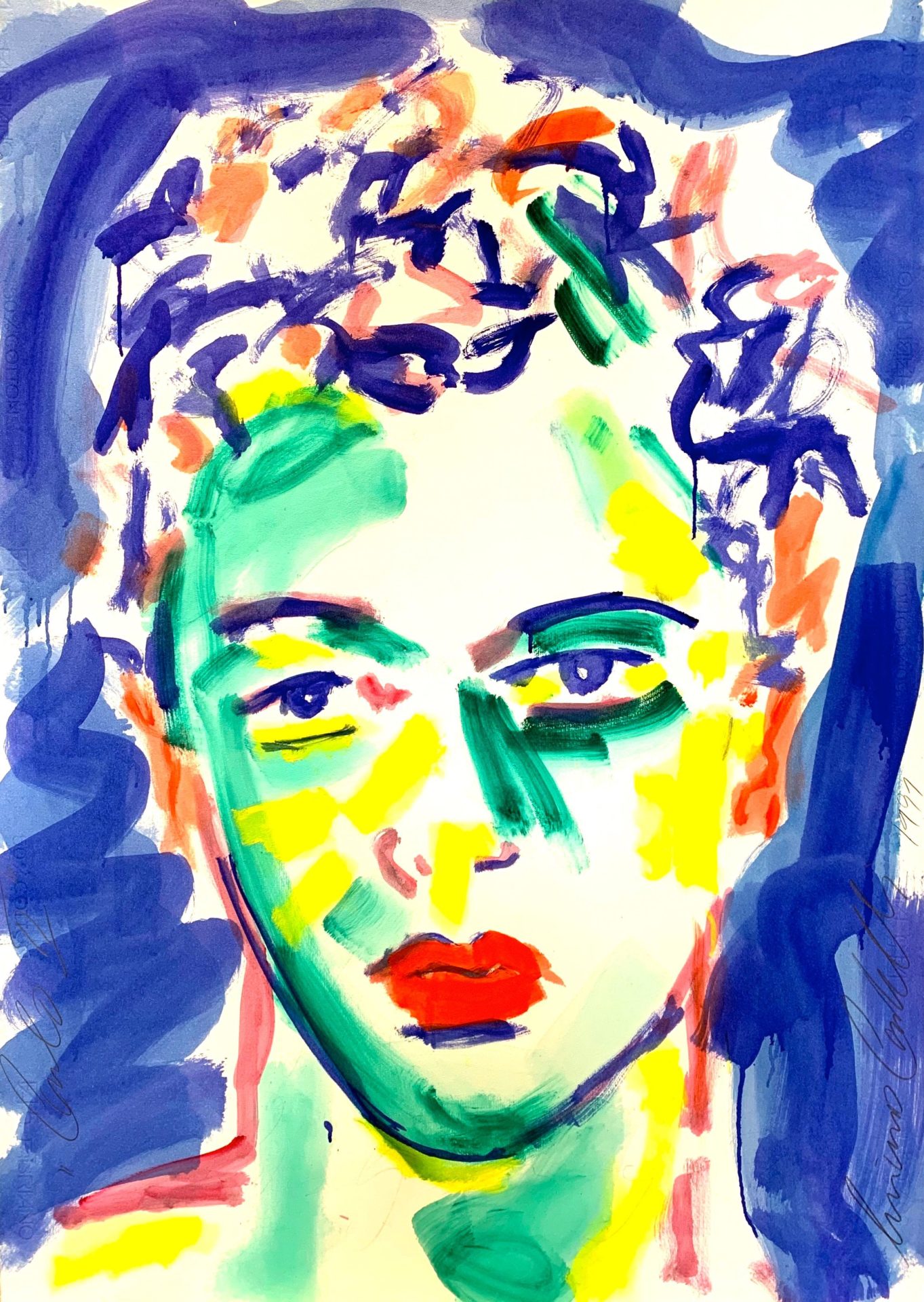Biography
Luciano Castelli is a Swiss painter, graphic artist, photographer, sculptor and musician.
Luciano Castelli attended the preliminary course at the School of Applied Arts with Max von Moos, then learned calligraphy and was the key figure of Lucerne’s bohemian scene in the early 1970s. Castelli and his flat-sharing community went down in art history with snapshots that the artist Franz Gertsch transformed into monumental photorealistic paintings. Alongside “Luciano Castelli I”, “At Luciano’s House” and “Marina makes up Luciano”, the most important of these was “Medici”, a group portrait of “the long-haired freaks around the shrill painter Luciano Castelli”, which became the “actual cover picture of Harald Szeemann’s documenta 5”. Castelli, who showed his first solo exhibition in 1971, was also invited as an artist to documenta 5 – at the age of just 21 – where he presented sculptures of everyday objects such as a shoe or a handkerchief that could also be used as a “Chiloum”, a smoke pipe. Castelli became a scene star.
He owed much to Jean-Christophe Ammann, former assistant to Szeemann and director of the Museum of Art Lucerne, who had brought him into contact with Gertsch and brought him to the Documenta. In 1974, Ammann showed androgynous photographs of Castelli in his groundbreaking exhibition “Transformer – Aspects of Travesty” and remarked: “For him, travesty means less a fundamental behaviour between the sexes than the expressive marriage of a masculine realising pole and a female pole marked by availability”. The exhibition also featured the surrealist Pierre Molinier, who subsequently corresponded with Castelli and staged him for photographs. While the androgynous self-stylization was influenced by the aesthetics of glam rock, Castelli soon began to explore other roles, ranging from young conservative to film star to sado-masochistic looks.
In 1978 Castelli moved to Berlin and ended up in a circle around the Galerie am Moritzplatz, to which he fitted in with his expressive, fast painting. The painters, who set themselves apart from intellectualism and the austerity of the 1970s avant-garde, went down in art history as the Neue Wilde. Castelli painted community pictures with Rainer Fetting as well as with Fetting’s partner, the artist Salomé. Together with Salomé, he founded the avant-garde punk band Geile Tiere, with whom he sang and played bass. The band was closely associated with the Berlin club Dschungel and gained fame through shrill performances. With Salomé and Fetting, Castelli undertook a tour with performance concerts through France in 1982.
Castelli settled in Paris in 1989 and married Alexandra in 1991, whom he painted again and again. He experimented with a self-made camera obscura and developed his Revolving Paintings. These can be rotated and have no defined upper edge. Depending on how they are hung, viewers see different faces, bodies or city views. The motifs “overlap and penetrate each other, sometimes lying flat or standing on their heads, providing supposedly abstract structures and often only then prove to be objectively bound when the corresponding motif is ‘straightened out'”, writes Peter K. Wehrli.
Castelli is currently experiencing a growing interest in his work. His photographic self-portraits have been published in a volume by the Zurich art publisher Edition Patrick Frey and shown in a broad survey exhibition in Paris. In 2015, the National Art Museum of China in Beijing will present a major exhibition of his paintings, which will then go to the Contemporary Art Museum in Shanghai. For China, Castelli had motors developed with which the Revolving Paintings slowly rotate 360° around their axis.


